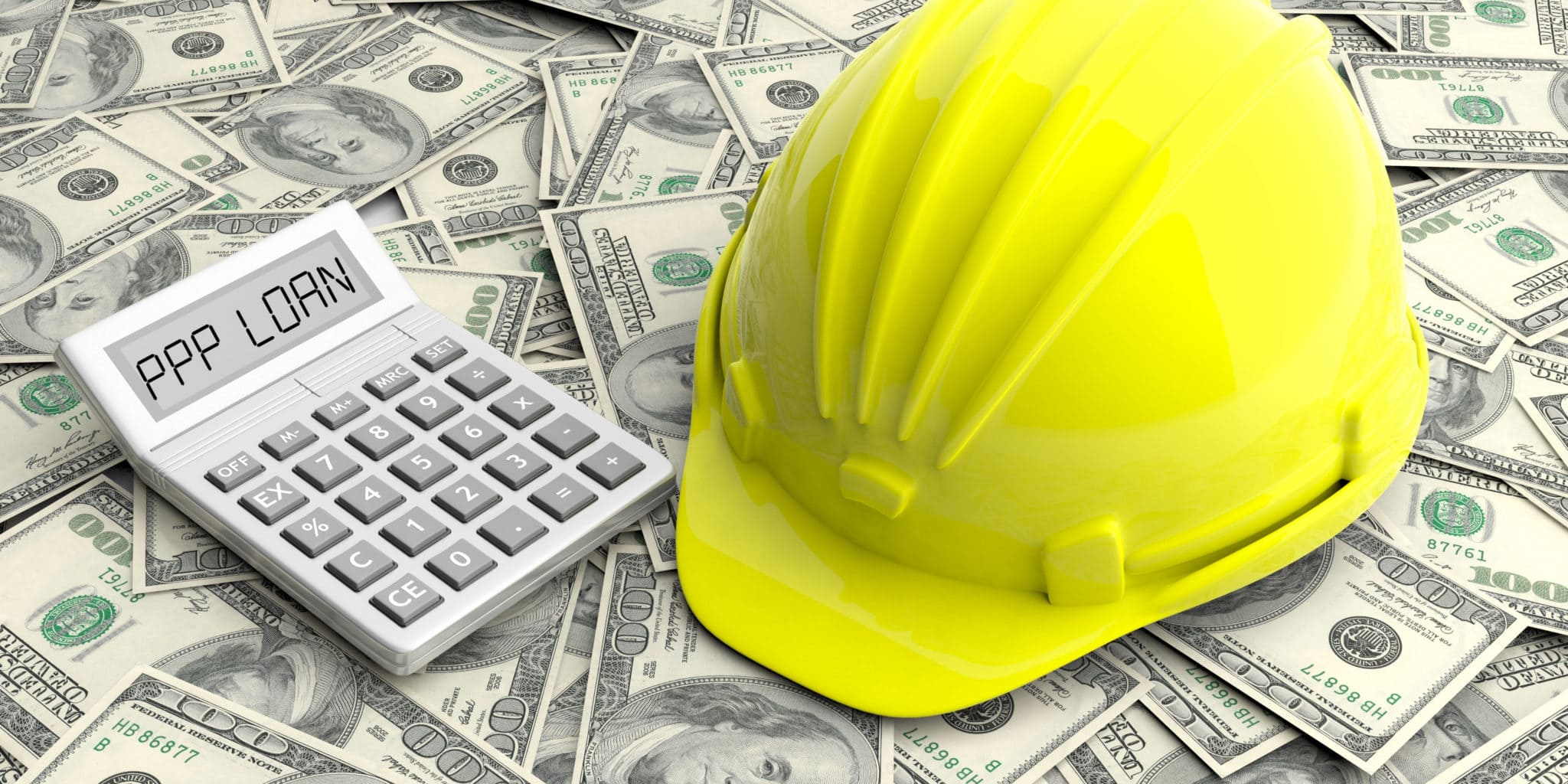Many construction companies have taken advantage of the Paycheck Protection Program (PPP) loans during the COVID-19 pandemic. Established under the CARES Act, the PPP provided eligible businesses with loans — guaranteed by the Small Business Administration (SBA) — to help cover payroll and other costs.
Recipients of PPP loans may also qualify for debt forgiveness if they meet certain requirements and submit a timely application with their lenders. The rules regarding eligibility for forgiveness are complex, so if you plan to apply it’s a good idea to ask your professional advisors to guide you through the process.
Eligibility details
To qualify for loan forgiveness, borrowers must spend PPP funds on eligible expenses within 24 weeks (but no later than December 31, 2020). Originally, this “covered period” was only eight weeks, but it was extended by the PPP Flexibility Act (PPPFA) for loans received on June 5, 2020, or later. Borrowers that received loans before that date were given the option to choose between up to a 24-week or eight-week covered period.
Eligible expenses include payroll costs, rent, mortgage interest and utilities. To qualify for full forgiveness of the PPP loan amount, however, at least 60% of the borrowed funds must be used for payroll. (Originally, the threshold was 75%, but it was reduced to 60% under the PPPFA.)
According to SBA guidance, borrowers that spend less than 60% of the loan funds on payroll may apply for partial loan forgiveness, so long as 60% of the amount forgiven is spent on payroll. For example, a borrower that received a $150,000 PPP loan and spent $60,000 on payroll would be eligible for forgiveness on $100,000 of the loan.
Another requirement for loan forgiveness is that borrowers maintain their payrolls at pre-pandemic levels. After all, the PPP was intended as an incentive for small businesses to keep their workers on the payroll.
If your construction company reduced wages or its number of full-time equivalent employees (FTEEs) after February 15, 2020, your eligibility for loan forgiveness may be reduced or eliminated unless you restore wages and headcounts to previous levels by the earlier of the date of the forgiveness application or the end of the year. (This “restoration date” was changed from June 30 by the PPPFA.)
There are also “safe harbors” and exceptions that can help a company avoid or reduce the FTEE or wage rate forgiveness reductions. These may apply if the borrower is 1) unable to rehire former employees or hire qualified replacements by the deadline, or 2) unable to return to its previous level of business because of COVID-19-related governmental guidelines.
SBA guidance
In August, the SBA, in consultation with the U.S. Treasury Department, published Frequently Asked Questions (FAQs) about forgiveness of PPP loans. The FAQs provide welcome guidance on the forgiveness application process. Here are some of the highlights:
Processing period. So long as you submit a forgiveness application within 10 months after the covered period ends, you need not make any loan payments until the forgiveness amount is determined or the application is denied. Accrued interest will be due on any portion of the loan that isn’t forgiven.
Eligible payroll. Payroll costs incurred during the covered period but paid after the period ends are eligible for forgiveness, provided they’re paid by the next regular payroll date after the period ends. Payroll costs incurred before the covered period but paid during that period are also eligible. Forgivable cash compensation is limited to $100,000 per employee on an annualized basis (that is, $1,923 per week times the number of weeks in the covered period).
Eligible nonpayroll. Like payroll costs, nonpayroll costs incurred during the covered period but paid after the period ends are eligible for forgiveness, provided they’re paid by the next regular billing date. Nonpayroll costs incurred before the covered period but paid during that period are also eligible.
Owner compensation. Forgiveness may be available for compensation paid to owners, but it’s subject to limits that vary depending on the business entity type and applicable covered period. In addition, payroll for owner-employees and self-employed individuals is capped at $20,833 across all businesses in which they have interests ($15,385 if an eight-week covered period is used).
The FAQs also provide guidance on the treatment of noncash compensation, reductions in forgiveness for businesses that reduce wages or headcounts, and several other issues.
The tax considerations of loan forgiveness
The CARES Act provides that forgiveness of a PPP loan isn’t included in the borrower’s gross income for tax purposes. However, in Notice 2020-32, the IRS ruled that borrowers may not deduct otherwise deductible expenses allocable to forgiven loan proceeds. The agency cited Internal Revenue Code Section 265, which disallows deductions for expenses related to tax-exempt income.
This ruling effectively erases the benefits of avoiding tax on the amount of loan forgiveness. In addition, the loss of these deductions may reduce the benefit of other tax breaks tied to payroll or taxable income levels. Several prominent organizations, including the American Institute of Certified Public Accountants, have urged Congress to overrule Notice 2020-32, arguing that it’s inconsistent with the intent of the CARES Act. As of this writing, whether Congress will do so remains to be seen.
Be prepared
If your construction business received a PPP loan, be sure to look closely into which expenses are eligible for loan forgiveness. To ensure a successful application, document these expenses carefully and contact us for assistance in making sure everything is in order.
© 2020


